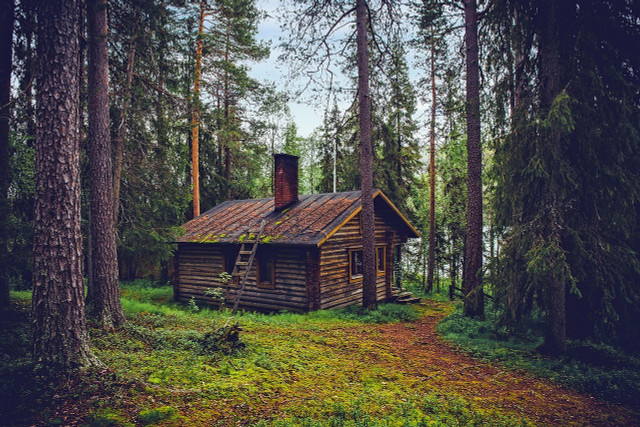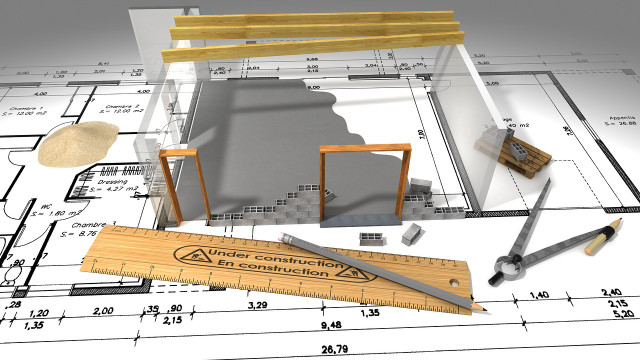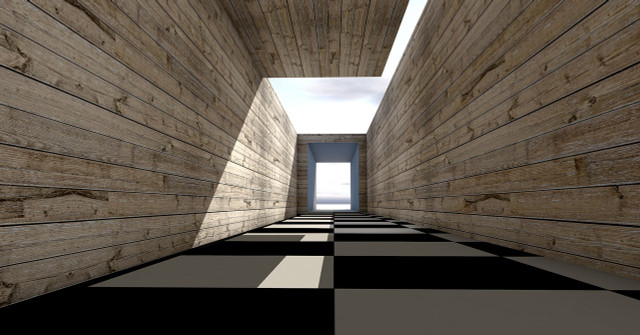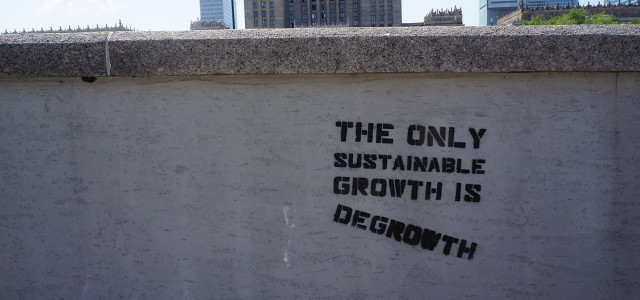What is vastu and where did it come from? This ancient approach to architecture is all about maintaining peace, prosperity, and planetary balance.
Vastu — or vastu shastra — is an ancient approach to architecture that is native to India. It encompasses many aspects of building and design, such as interior décor, building techniques, and garden and house plans. Vastu is described by some as a “fusion of art and science” and is designed to promote harmony and wellness for the inhabitants of a dwelling.
Although it is thousands of years old, vastu is still considered during building design, particularly in India. Proponents of vastu believe that this approach to building can save time and money, as well as foster good health, happiness, peace and prosperity. The idea behind vastu is the integration of functional architectural designs with climate, natural forces, and the spiritual realm.
As we look toward green architecture, sustainable building materials, and nature-based solutions to ameliorate the ongoing environmental crisis, could an investigation into what vastu is be worthwhile? Some experts feel vastu shastra provides “satisfactory answers to many questions of physical, climatological, and social influence on the design of buildings.” Let’s take a closer look.
What Is Vastu?

(Foto: CC0 / Pixabay / ArtTower)
To understand what vastu is, we need to briefly look at where it came from. If you have an understanding of Hinduism, or traditions and practices like the chakra system or the 8 limbs of yoga, then you have a head-start. They all actually share the same origins as vastu — which is why vastu is considered the “yoga of design”. Yoga postures (asanas), yogic philosophy, and vastu shastra all encompass the same set of core principles that marry science and spirituality and promote balance with each other and all living things.
All of these traditions have their roots in an ancient set of books called the Vedas, which are still the primary scriptures of the Hindu faith. Some of these texts focus on spiritual teachings, while others describe a cosmic science. Overall, these scriptures and stories combine and blend both into one — in ways that also encompass art, geometry, astronomy, astrology, the universe, spirituality and humanity. These teachings are all about alignment, synchronicity and balance between all that is. All of the major aspects of these teachings are intertwined into the vedic architecture of vastu shastra.
The Vedas also talk about various forms of energy that flow through the entire universe. They emphasize how these energies interact with each other. According to the Vedas, balance and harmony of these energies is key to success in all endeavors — including architecture. Therefore, vastu is a way of designing a home or space that balances energies.
How Does Vastu Work?



(Foto: CC0 / Pixabay / 12019)
Vastu shastra creates harmonious energy flow inside and around a home or building by incorporating the core concepts of Vedic teachings, which are all centered on symbiotic human-environment interactions. Humans are regarded as an energetic beings that can live in synchronicity with the energetic forces of nature in vastu design. So can their homes, businesses or places of worship.
Research on vastu suggests that “sustainability seems to be at the core of the practice”, even when sustainable design was not explicitly part of the planning. Others experts claim that vastu shastra principles can play a role in reducing water pollution, air pollution, sound pollution, and increasing temperature on earth.
Vastu architects will plan, design and build a dwelling after a thorough assessment of the land it is to be built on and surrounding areas. They will assess the best ways in which the dwelling can maximize the natural resources around and inside it — in ways that work in harmony with those natural resources — and in accordance with Vedic philosophy and science. These include:
- The building material suggested in vastu is direct from nature and decomposable.
- Trees can be used around buildings to help provide shade and shelter.
- Sloping sites to the north, east and north-east will promote natural water drainage according to prevailing winds.
- Use of wood and natural, renewable building materials to reduce consumption.
Soil and land management, water supply and flow, sunlight, wind direction, climate and heat are just some of the other factors taken into account to promote living in as much synchronicity with the elements as possible. Vastu shastra is all about maximizing the positive effects the elements and forces of nature have on humans and minimizing the negative.
Vastu and the Elements



(Foto: CC0 / Pixabay / thommas68)
The five elements are believed to be the energetic building blocks of all matter — including humans — and are a core concept in vastu design. According to traditional vastu knowledge, these five elements are interconnected and will also influence the balance of positive and negative energy inside and outside of the building. If these elements are positioned correctly, they will promote positive and balanced energy flow, with positive energies dominating over negative and unhealthy ones.
The five elements are:
- Prithvi (Earth)
- Jal (Water)
- Agni (Fire)
- Vayu (Air)
- Aakash (Space)
Vastu design considers these five elements along with the energetic forces of nature — like solar energy, cosmic energy, lunar energy, thermal energy, magnetic energy, light energy and wind energy. Certain elements are believed to be suited to specific orientations and areas — which are discussed in more detail soon. It also brings in our five senses and examines how all of these factors interact to promote harmony.
Vastu and Orietation



(Foto: CC0 / Pixabay / Amigos3D)
Directions and orientations are very prominent in vastu. The human brain is sensitive to them and their energetic influence. Each direction signifies an aspect of life and is governed by various deities. The five elements and the forces of nature are blended with directions and orientations in ways that promote harmony and balance within the dwelling — and in turn — from the dwelling.
Vastu architecture will look at directions and orientations in relation to things like harsh and soft rays of sun, water supplies, drainage, soil, and site excavation. The house will then be planned accordingly — making the most of the relationships that exist between all of these factors — on an energetic and spiritual level, as well as a practical one. There are ten directions in total.
The major directions are:
- North (Uttar) — Wealth and prosperity — Ideal direction for living room and open entrance, seating area, office.
- South (Dakshin) — Death — Ideal direction for back yard, kitchen garden
- East (Purab) — Progress & growth — Ideal direction for main entrance, guestroom, bathroom
- West (Paschim) — Water — Ideal direction for overhead tank, study room
The minor directions:
- North-East (Ishanya) — Religion & trinity — Ideal direction for prayer room, well, underground water tank
- North- West (Vayavya) — Air/wind — Ideal direction for bedrooms
- South-West (Nairitya) — Purity & cleanliness — Ideal direction for toilet and bathroom
- South-East (Agneya) — Energy, vigor & strength— Ideal direction for kitchen, power supply
- Top or above (Urdhwa) — Spiritual knowledge — Ideal direction for courtyard
- Bottom or below (Adhar) — Resources and worldly pleasures — Basement
Examples of Vastu in Practice



(Foto: CC0 / Pixabay / stux)
The connections between man and nature, the five elements, the five senses, and directions and orientations dictate vastu design and building. Here’s some examples of how these principles come together
The earth element is associated with:
- The south-west direction
- All five senses
- Grounding
- A stable foundation
- Gravitational and magnetic qualities
Application:
- Plants, crystals, stone, wooden items, and other earth-related items can be placed in this direction in the house
- Trees and vegetation can be planted in this direction.
- It’s the best choice of location in vastu for the master bedroom to reinforce the position as the head of a family.
The water element is associated with:
- The northeast direction
- Taste, touch, sight, hearing
- Flow and changing form
- Pure consciousness
Application:
- Indoor and outdoor water features, swimming pools, fountains, ponds, mini waterfalls and aquariums can be placed in northeast.
- Water tanks, pipes and water supply should also be considered.
The fire element is associated with:
- The southeast direction
- Sound, touch, sight
- Digestion and transformation
- Energy, light
Application:
- Fires, heaters, kitchen, candles, and lamps can be placed in the southeast.
- Electrical and other powered-appliances should also be considered.
The air element is associated with:
- The north-west direction
- Sound and touch
- The concept of movement
Application:
- Air coolers and conditioners, balconies, and wind chimes can be placed this area.
- Trees, windows, building height and other considerations can be organized to maximize air flow through the house.
The space element is associated with:
- Sound and silence
- No limits or boundaries
- Growth and progress
- The seen and unseen
Application:
- The center of the dwelling should be an open space and clutter-free
- This element is directly linked to sound and silence. Akasha (ether) is the expansiveness in the centre of your home, so the elements of energy and dynamic space dominate here.
Vastu Shastra in the Home



(Foto: CC0 / Pixabay / PIRO4D)
If your home is already built — don’t worry! There are many ways to incorporate vastu into your interior.
- Make sure there is good air flow and lighting, and that rooms are bright and clean.
- Keep the center and entrance of the house empty and without obstructions.
- Keep the northeast part of the home — the origin of positive energies — open, light and neat.
- Keep heavy furniture alongside south and west walls.
- Place light furniture adjacent to north and east walls.
- Avoid keeping plants and water features in the bedroom.
- Ensure that your dining space is near the kitchen and not the main entrance.
- If you have a mirror in the bedroom, make sure it does not reflect the bed.
- Do not keep a shoe stand at the entrance of the house.
- You should not sleep with your head pointed north.
- Suitable colors for bedrooms are are white, grey, green, rose and blue.
- Wall clocks should always be in working condition and placed in the east, west and north walld of the house.
- Try using more wooden furniture as it does not emit harmful energy like plastic furniture.
- Avoid metal furniture as it emits negative electromagnetism.
Read more:
- 9 Best Foods to Detox Your Liver Naturally
- Horticultural Therapy: How Gardening Can Help You Heal
- Ashwagandha Health Benefits & Drawbacks
Important Information regarding Health-related Topics.
** Links to retailers marked with ** or underlined orange are partially partner links: If you buy here, you actively support Utopia.org, because we will receive a small part of the sales proceeds. More info.Do you like this post?







